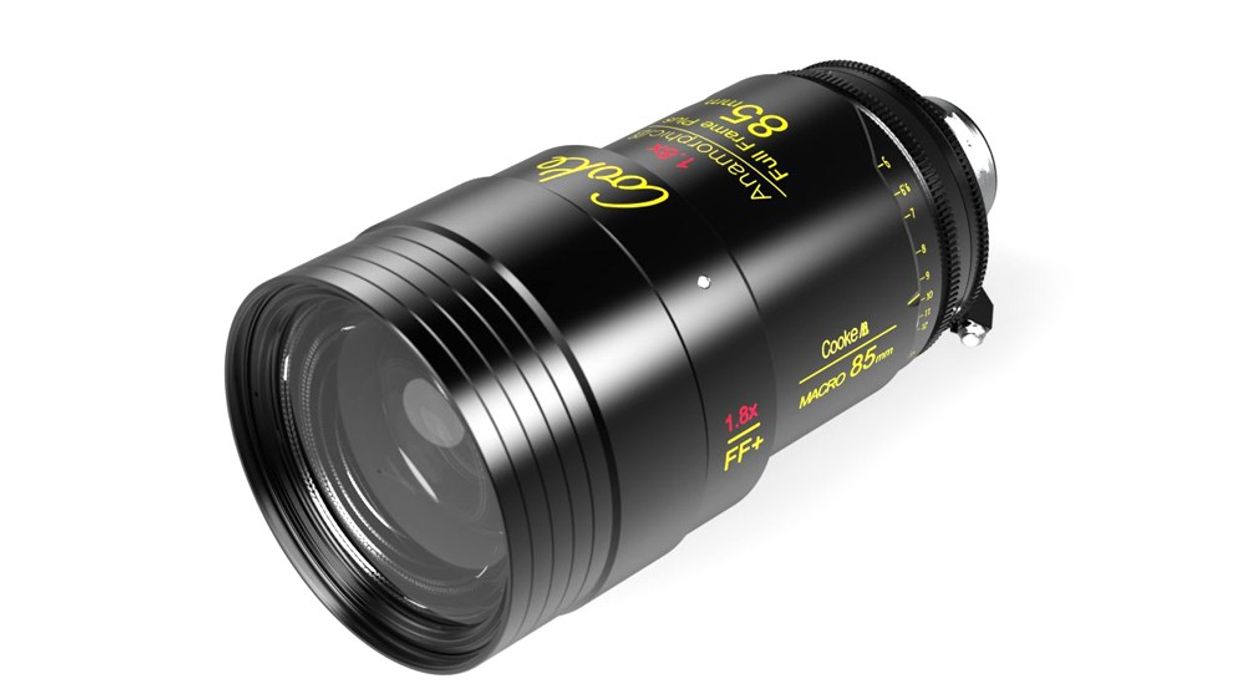Cooke Cements Itself Further Into Full-Frame with New 85mm Macro Anamorphic
Cooke expands its lineup of anamorphic glass.

BSC Expo took place over the weekend in London. For those stateside, it's similar to Cine Gear Expo, and our friends over at Cinema5D got a first look at the Canon EOS-1D X Mark III that's worth a watch, but Cooke also made a splash with a new 85mm Macro Anamorphic/i Full Frame Plus lens.
Key Features
- 85mm
- T2.8
- 1.8x Squeeze
- Full-Frame
Cooke's jump into full-frame lenses has been well documented on No Film School. The S7/i line to date has 12 focal lengths from 18 to 180mm all at T2.0 with a 16mm in development. The spherical lenses create that classic "Cooke Look" while covering image circles up to 46.31mm. RED Monstro 8K VV, ARRI Alexa LF, Panasonic DXL, Sony VENICE, Super 35, 35mm film – all covered.
The optic nerds have been cranking out anamorphic glass since introducing the Anamorphic/i Primes in 2013. The 10 focal lengths have a 2x squeeze covering sensors up to Super 35 (33.54mm) and were developed to color match the spherical S4/i, 5/i, and miniS4/i lenses. Five years later, Cooke debuted its Anamorphic/i Full Frame Plus lenses which now has 8 focal lengths covering 36 x 24mm sensors (43.4mm). They complement the Anamorphic/i Primes very well.
Watch Dan Mindel on Anamorphic
The set includes a 32, 40, 50, 75, 100, 135 and 180mm–the 85mm is its first macro. All focal lengths are T2.3 except for the 85mm Macro which is T2.8. However, all feature a 1.8x squeeze. The reason why the full-frame versions do not have the same 2x squeeze as the Anamorphic/i Primes is because at 2x, you lose too many pixels. At 1.6x there isn't enough of the anamorphic look, so Cooke split the difference and you get roughly 90% of the pixels at 2.4:1 and 100% pixels at 2.7:1.
If you're into a unique anamorphic look, Cooke developed Special Flair (SF) versions of the Anamorphic/i Full Frame Plus and Anamorphic/i Primes. The SF flavors allow you to kick the flares, bokeh, and aberrations differently thanks to a unique coating. It's a vintage look with an oval bokeh and deeper blue flares. All the lenses mentioned tout Cooke's open i/Technology protocol to streamline production data.
Specs
- Focal Length: 85mm
- Max Aperture: T2.8
- Coverage: Full Frame
- Squeeze: 1.8x
- Min. Focus: 22" (500mm)
- Front Diameter: 136mm
- Lens Mount: PL
- Length: 10.7" (272mm)
- Weight: 11.4 lbs (5.2 kg)
Price & Availability
The Anamorphic/i Full Frame Plus are expected to come out sometime this year. No word on pricing but best estimation based on the cost of the S7/i and Anamorphic/i Primes would be between $26,000 and $33,000.











